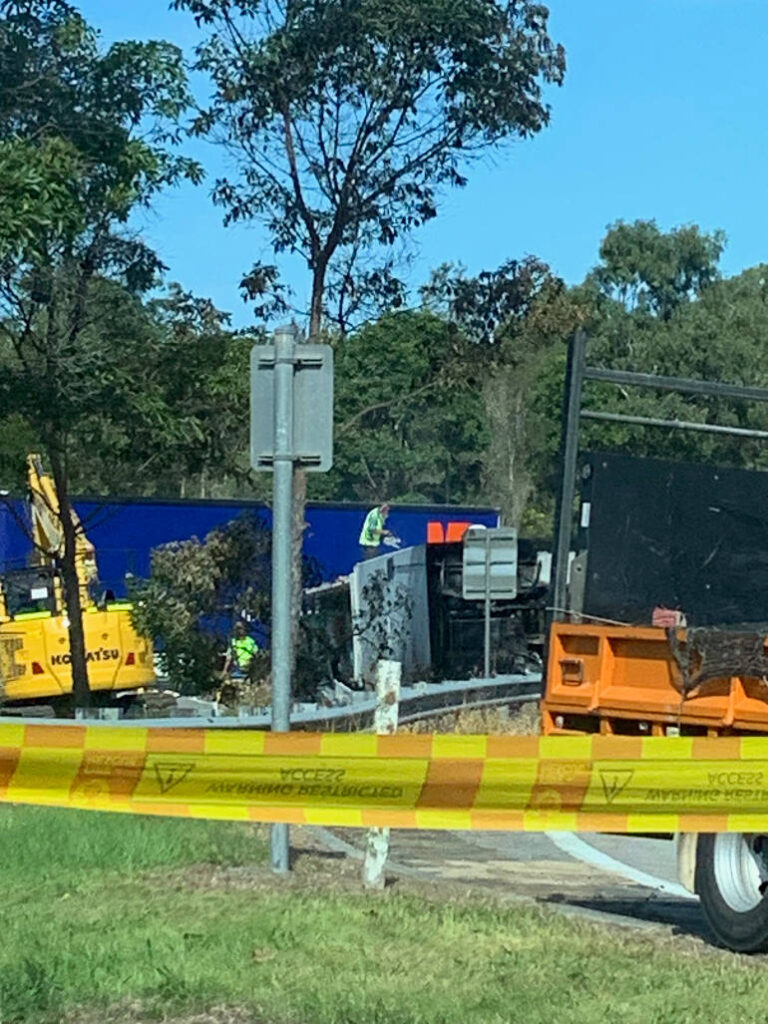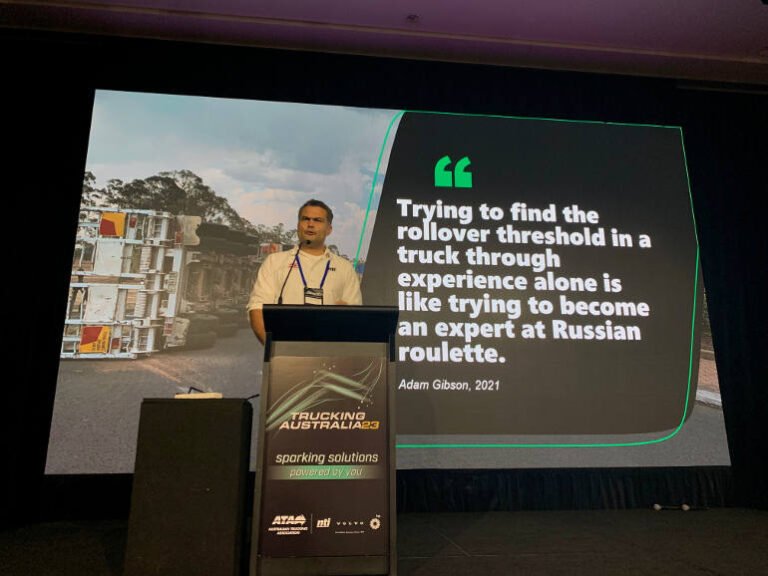On the eve of the TruckingAustralia23 conference held on the Sunshine Coast, I was travelling in the Byron shire visiting my daughter when we passed a truck rollover accident. I don’t know the details of how it actually happened, but you can make out from the rubber neck photo below, it occurred on a roundabout.

It could have been because of an unexpected animal crossing, a car cutting into the truck’s path, or an unstable load shifting perilously. But if it was anything typical, it was likely caused by an experienced driver going too fast into the tight corner.
“When I look at our serious crashes of this type of single vehicle unchecked rollovers I’m generally seeing drivers who have probably explicitly driven that piece of road dozens if not hundreds of time before,” said Adam Gibson, research manager at National Transport Insurer, or NTI, where he authors the NTARC Major Accident Report which analyses NTI’s extensive claims data.
“Our drivers kind of drive through that corner at 54 [kmh], and then they drive through it at 56, and then they drive through at 58. And then they fail to drive through at 60,” said Gibson, addressing an audience at the session Preventing Truck Rollovers at the TruckingAustralia23 conference.
Rollovers are a leading cause of truck occupant fatalities. As the truck rolls over, the cab, or the driver’s space, is more likely to be crushed.
“Trying to find the rollover threshold in a truck through experience alone is like trying to become an expert at Russian roulette,” said Gibson.
NTI’s 2022 report found human factors responsible for nearly two of every three serious heavy vehicle crashes.
Being mindful that road design changes aren’t going to happen anytime soon, Gibson focused on what can be done here and now to improve the likelihood of drivers making it home safe at the end of their workday.
Certainly, he said, the answer is not in how the vehicle feels for the driver. Drivers bragging on Facebook that it couldn’t happen to them because “I’ll feel it through the seat of my pants,” has no credibility in Gibson’s philosophy.
How much the drivers feel isn’t built in. Gibson, a mechanical engineer with experience design, risk and compliance, said he’s played around with suspension underneath truck cabins and the same truck can have the feel of a race car or like it’s going to roll over at 10 kmh.
Gibson shared findings from the 2022 major accident report: among single truck rollover crashes the average age of the driver is 43 years, and the average experience in the class of vehicle they were driving at the time was 13 years.
“This issue is not about new drivers. It’s about experienced drivers that get comfortable, they get complacent.
“Maybe something’s different in their world. And they failed to consider that when they’re making that real-time exceptionally complex decision around whether they can go around that corner at 52 or 56.
“And this brings me really to the biggest point I have here. We want drivers to drive at appropriate speeds.
Today’s technology includes stability control systems which trigger interventions and automatic braking in certain instances.
“For the first time we’ve got a source of near miss data that tells us between our drivers and our fleets who is driving with a significant margin of error, who is pretty likely to bring their gear home at the end of each week, and who’s living on borrowed time.”
That’s the important lesson — use the data from the electronic braking systems (EBS) and have serious conversations with drivers and drive down road injuries and fatalities.
“We cannot continue to have the trauma in our industry that we have currently,” said Gibson.
The TruckingAustralia23 conference was convened by the Australian Trucking Association, who together with member associations represent some 50,000 businesses operating in Australia. The association was formed in 1989 after the country’s worst ever road accident, the Grafton bus crash which took 21 lives. Its aim was to promote safety, professionalism and viability in and for the road transport industry. Indeed, it originated as the Road Transport Forum, whose three foundation sponsors National Transport Insurance, OEM Volvo, and fuels group BP remain stalwarts of the ATA today.






